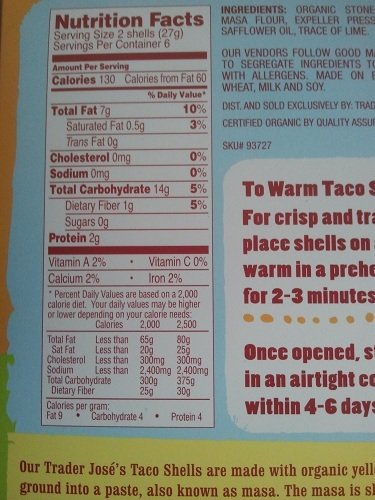Food Labels
Food Labels are plastered on most processed, packaged, boxed, or bagged food products and called Nutrition Facts! Their purpose is education or smart food choices, and it is a great lifestyle solution to read them! What should you be looking for and where is a good place to start?
My Tips for Using Food Labels:
Look at Serving size and the amount that you are actually eating. Be savvy because manufacturers will try to trick you!
- Tip: The average person should eat around 2000 calories per day, so if the calorie count is over 400 calories, it is very high and possibly should be avoided! Good to be a calorie counter when making your purchases to see if a food product will fit your meal plan!
- Tip: If you are going to eat two servings, you must double the calories and the nutrients listed on the label.
- Tip: Most people eat an entire unit. Manufacturers will trick you by giving statistics for half of a unit, especially on caloric foods. Do not just glance at the calories and assume that is for the entire item. Check the servings per container. Many large single serve cookies are labeled as 2 servings and no one is going to eat half a cookie. You must double the calories and nutrients. Many sausage packages with 8 sausages will contain 12 servings? Crazy math needed here to figure out the values of a single sausage. Once again this is done to make the calorie count seem less! I routinely refuse to buy products that try trickery!
- Tip: Check the calories compared to the nutrients. Is this a good choice with lots of nutrients or just an empty processed food? Is it worth eating?
Check the Fiber Content:
- Tip: The fiber content is listed under Carbohydrates. Daily fiber should be around 35 grams per day, but most of you get less than half of that! Look for foods that offer fiber!
- Tip: Most foods offer little or no fiber! Avoid them! Easy choice!
Check the Sugar Content:
- Tip: Foods with added sugars add extra calories. Look for foods that are low in added sugars. There are many names for sugars so read the ingredient list carefully! Some are sucrose, high fructose corn syrup, corn syrup, fructose, glucose, and many others.
- Tip: Read the ingredient list and choose foods that do not include added sugars in the first few ingredients!
Check the Fat Content:
- Tip: Choose foods that are low in saturated fats and trans. fats and cholesterol. Good fats are the monounsaturated fats and polyunsaturated fats!
- Tip: Daily fat intake should be between 20% and 35% of your daily food calories.
- Tip: If a food has a fat %DV (Daily value) that is more than 20% of daily calories, avoid it because it is too high. It is only one food and will put you over your daily fat level quickly! Try to choose foods with a %DV of fat that is low which is 5% or less!
Check the Salt Content:
- Tip: The current guidelines recommend eating less than 2,300 milligrams of salt per day (1 tsp), but most of us eat much more. Most of the salt we eat comes from processed foods. Many processed food meals contain more than an entire day’s salt content in one small serving. Read the label and choose foods low in sodium. Avoid high sodium choices and choose low sodium choices.
*****
It is a healthy diet habit to read food labels because they allow us to choose the best food products available and offer great guidelines! In reality though, real foods rarely contain a food label! These should make up the bulk of your food choices daily!
Facebook - Like This Page?
Facebook - Like This Site?

Please Check out my other Website!
We will be moving the Healthy Diet Habits Website to the Holiday site!

US and Around the World - Includes the many Health Awareness Days/Weeks/Months
Lots of Food Holidays and Holiday Food Tips!!
Related Pages

Nutrition

- Nutrition Basics
- Calorie
- Calories and Money
- Calorie counts of Foods per Pound
- Half Plate Rule
- Protein
- Fats
- Carbohydrates
- Glycemic Index
- Glycemic Index Chart
- Glycemic Index Diet
- Fiber
- Increase Fiber
- High Fiber Food
- Sugar
- Sugar Substitutes
- Food Cravings
- Meaning of Food Cravings
- Ending Food Cravings
- Carbohydrates and Weight Gain
- Processed Foods
- Real Foods
- Salt
- Vitamins
- Minerals
- Phytochemicals or Phytonutrients
- Nutrition Confusion
- Dietary Problems








